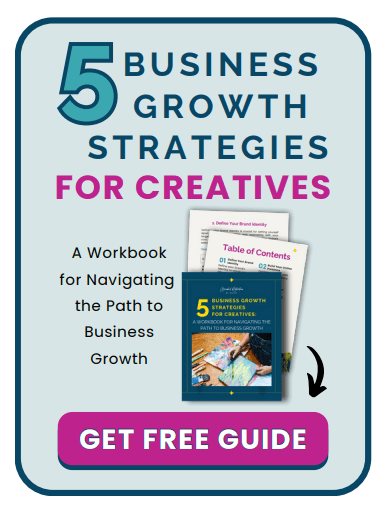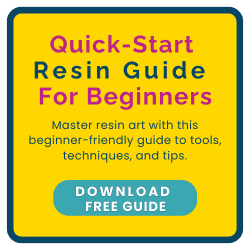Mixed Media Art Explained: Tips, Techniques, & History
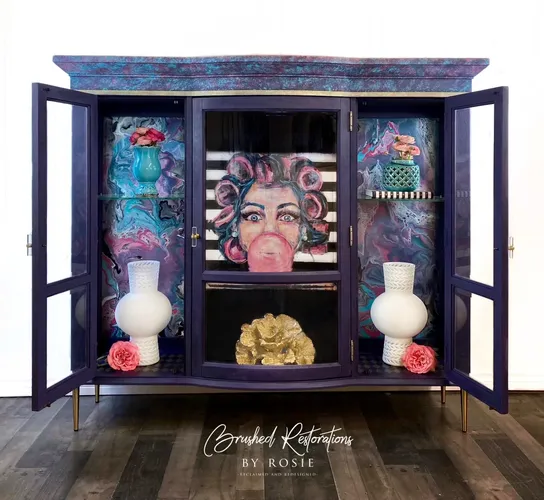
Introduction to Mixed Media Art
In the vast and vibrant realm of artistic expression, mixed media art stands out as a beacon of creativity and innovation. It’s a style that defies the traditional boundaries of art by merging diverse materials and techniques into a single, harmonious piece. For those who revel in the tactile and visual interplay between different art forms, mixed media art offers an exhilarating playground of possibilities.
My journey into mixed media art began in an unexpected place: the world of furniture restoration. As I breathed new life into old furniture, my curiosity and creativity urged me to experiment by incorporating various materials into my projects. What started with simple additions like paint and stains evolved into a fascination with resin, textures, layers, and forms. This exploration led me to embrace mixed media art fully. A field where I could blend everything from acrylics and alcohol inks to found objects and digital images.
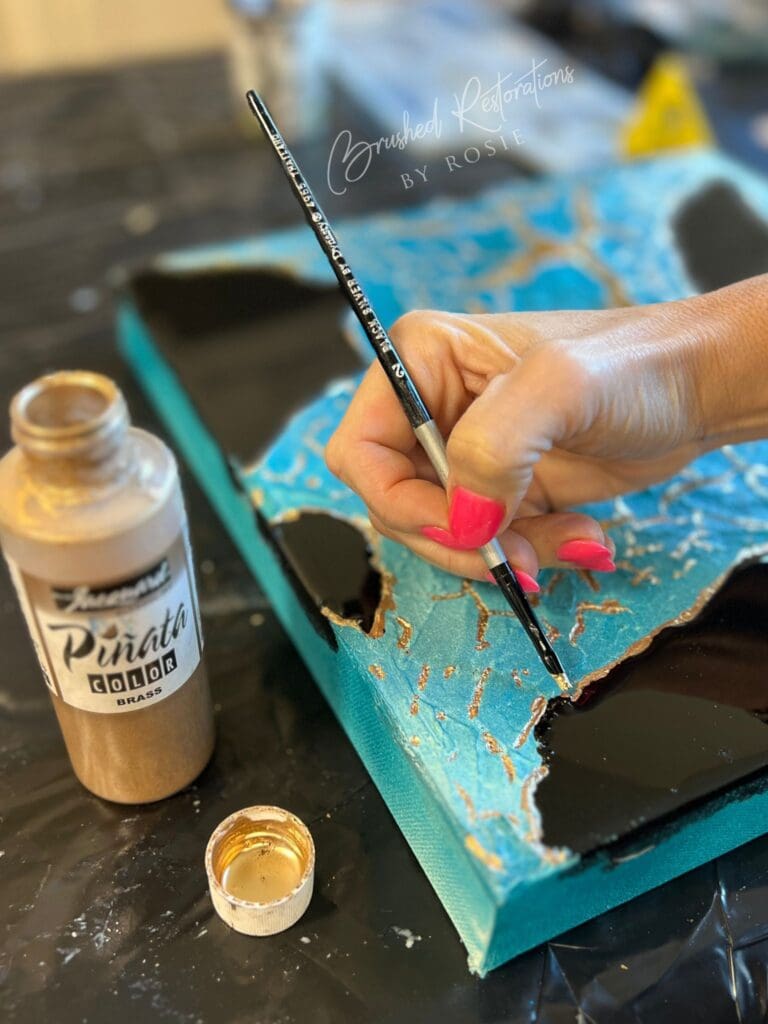
This guide is born from both a passion for mixed media art and a desire to share the insights I’ve gained along the way. Whether you’re just starting or looking to expand your artistic repertoire, this guide aims to provide you with the foundational techniques, inspire you with insights into the works of renowned artists, and empower you to express your unique artistic voice. So let’s dive into the dynamic world of mixed media art, where every creation is a discovery and every piece tells a story of artistic exploration.
Understanding Mixed Media Art
History and Evolution of Mixed Media Art
Mixed media art, characterized by its vibrant diversity and boundless creativity, has roots deeply embedded in the early 20th century. Pioneered by artists like Pablo Picasso and Georges Braque, who experimented with collage during the Cubist movement, mixed media quickly became a revolutionary form of artistic expression. By integrating objects like newspapers, fabric, and even metal into their canvases, they broke the confines of traditional art forms, paving the way for future explorations.
As the century progressed, the use of mixed materials became synonymous with artistic freedom and innovation. Movements like Dada embraced this ethos, using mixed media to challenge established norms and comment on contemporary society. Later, Pop Art artists like Andy Warhol and Robert Rauschenberg further pushed boundaries by incorporating mass-media and consumer goods into their artworks, blurring the lines between high art and everyday life.
What is Mixed Media Art?
Mixed media art is defined by its inclusion of two or more artistic mediums, combining elements such as painting, drawing, and sculpture with non-traditional materials to create intricate, layered pieces. The allure of mixed media lies in its capacity to merge various textures, shapes, and forms to produce artworks that are visually intriguing and conceptually complex.
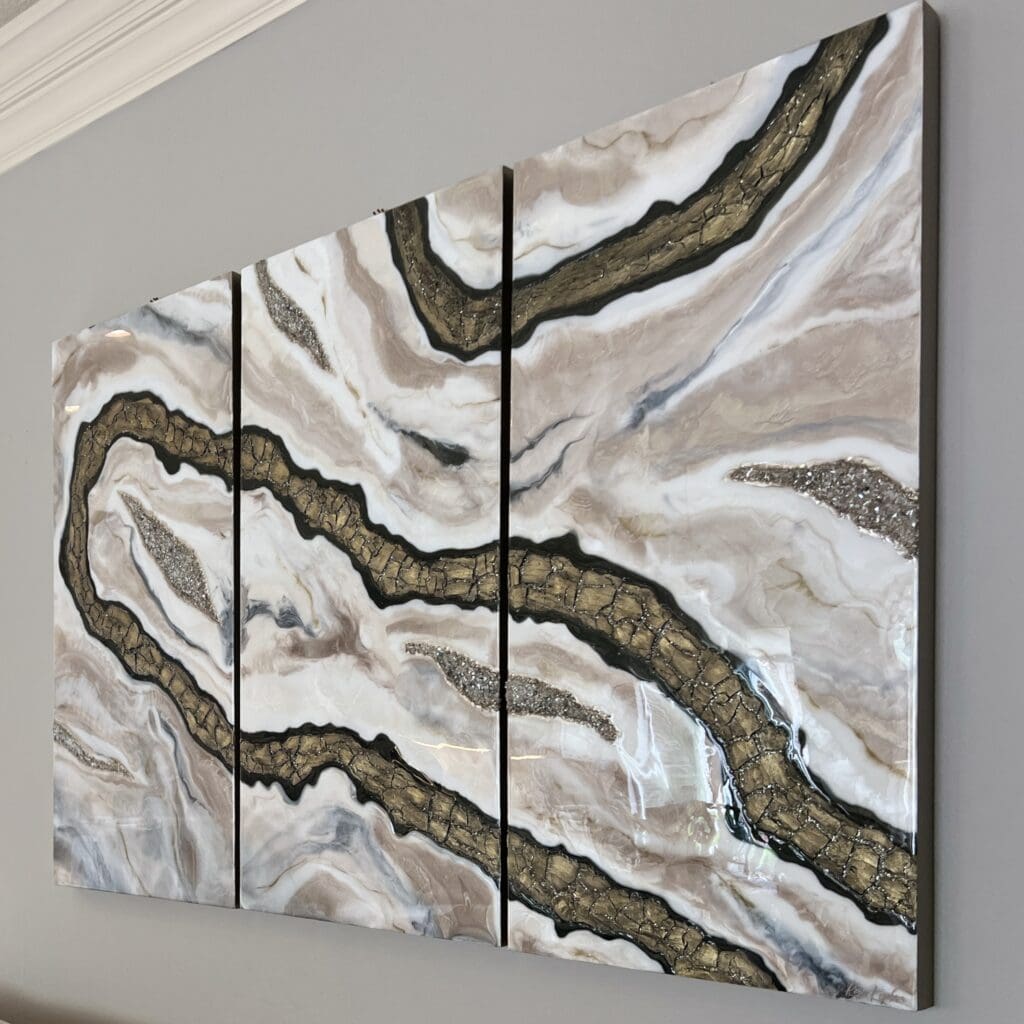
For instance, one of my own projects involved creating a vibrant art piece on wood panels. I began with a base layer using Crackle XL texture medium to impart a tactile, raised effect. Once that dried, I applied Meyspring Pigment Powders mixed with Pebeo Varnish, layering colors to build visual depth. Next, I enhanced the textural drama by adding Paint Couture Glaze, which settled beautifully into the textured crevices. To add a sparkling finish, I sprinkled glass glitter into the crevices of the cracks, catching the light and enhancing the piece’s dimensional quality. Finally, I sealed and highlighted these textures by carefully applying epoxy resin around the raised areas. This combination of mediums—texture medium, pigment powders in varnish, paint glaze, glass glitter, and resin—exemplifies how mixed media can transform a simple wooden panel into a dynamic, texturally rich artwork.
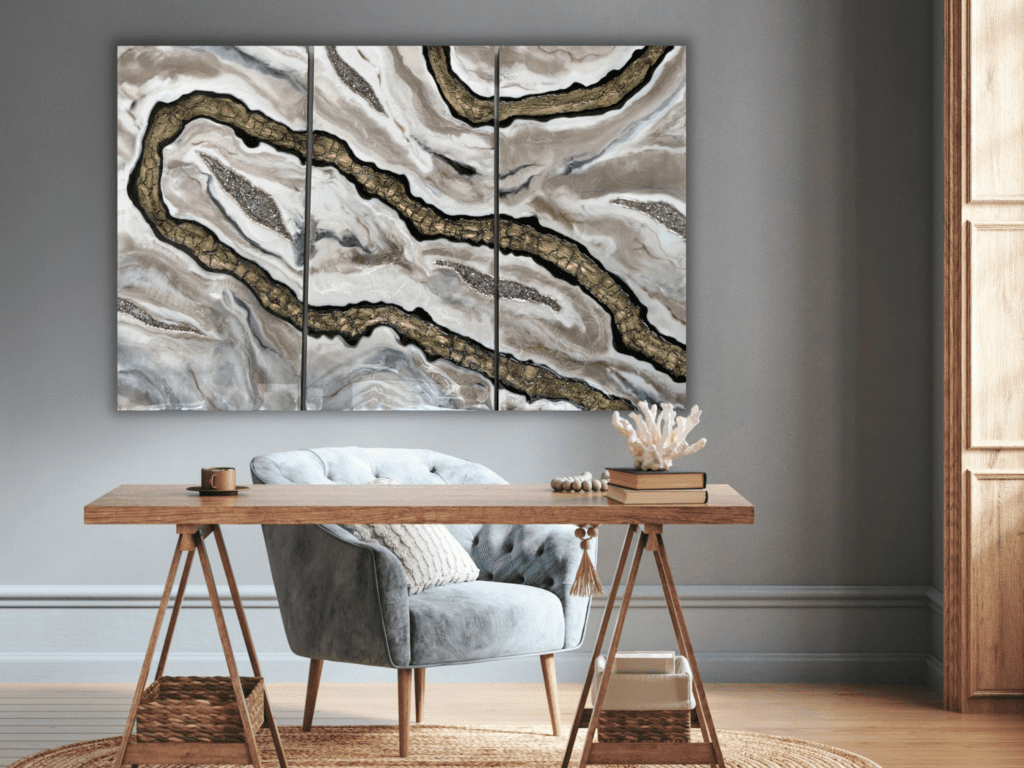
Each element in a mixed media piece serves a purpose, whether it’s to add color, create depth, introduce texture, or encapsulate a moment. The freedom to experiment with materials like fabric, paper, wood, and metal in conjunction with traditional paint or drawing mediums allows for endless creative possibilities. This exploratory approach not only enriches the visual experience but also deepens the narrative, making every creation a unique exploration of form and function.
Basic Techniques
Getting started in mixed media requires mastering a few fundamental techniques that form the backbone of most projects. These techniques enable artists to experiment with various materials, creating artworks that are both visually appealing and rich in texture.
- Layering: This is perhaps the most crucial technique in mixed media art. It involves building the artwork in stages, allowing each layer to dry before adding the next. This process creates depth and complexity in the artwork, as each layer interacts visually and texturally with the others. For beginners, a simple project might involve layering tissue paper, light fabrics, and acrylic paints on a canvas, sealing each layer with a clear acrylic medium.
- Collage: Utilizing different forms of paper, photographs, or even digital prints, collage is a technique that combines various elements into a single artwork. It is about cutting, tearing, and arranging these elements in a way that they tell a coherent story or create an appealing visual impact. Adhesives such as glue or medium gel are used to secure the pieces.
- Texturing: This technique adds a tactile dimension to artworks. Artists can use anything from molding paste, gel mediums, sand, and even small objects to create textures. Tools like brushes, combs, and sponges help in manipulating these materials on the surface for desired effects. For example, applying a thick layer of gesso and pressing leaves or lace into it before it dries can leave intricate imprints that serve as a fantastic background or focal point.
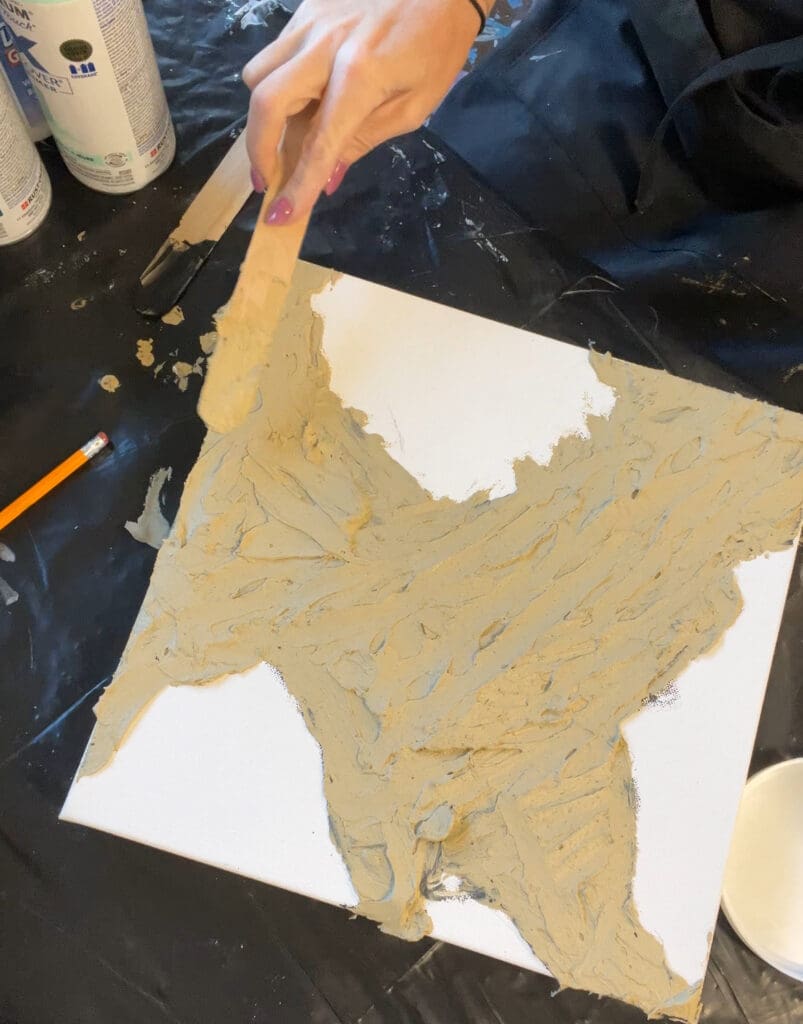
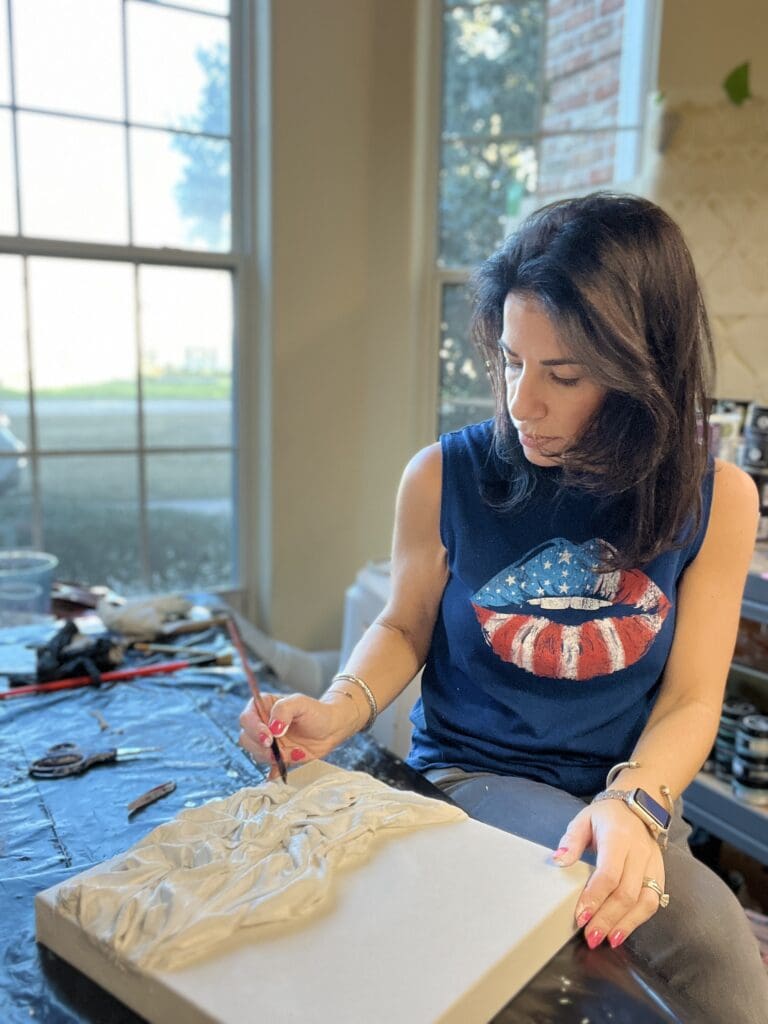
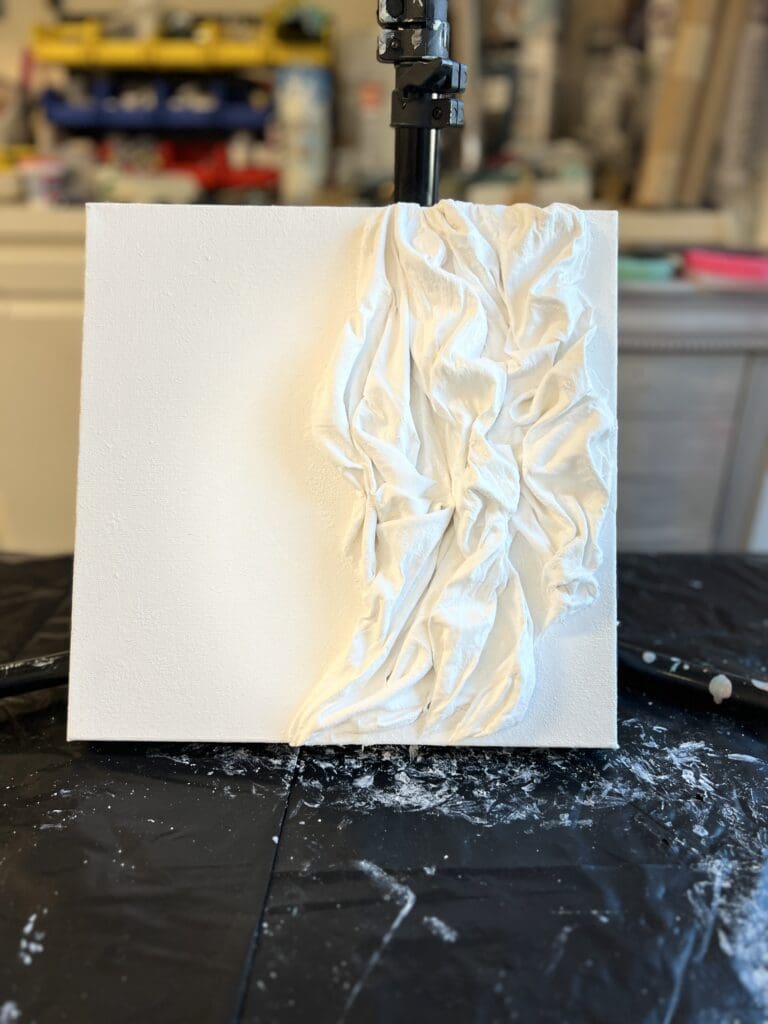
Advanced Techniques
For artists ready to expand their skills and incorporate more sophisticated methods, advanced techniques can offer new challenges and rewarding outcomes:
- Photo-transfer: This involves transferring an image from a photograph, magazine, or print onto another surface using a transfer medium. This technique is excellent for adding narrative layers to a piece. For instance, transferring personal photographs onto a painted canvas can create a deeply personal mixed media piece that resonates with autobiographical elements.
- Encaustic Painting: Encaustic painting involves using heated beeswax mixed with colored pigments and resin. The wax is applied to a surface and reheated to carve or manipulate before it solidifies. This technique is valued for its luminous colors and sculptural qualities that allow artists to build up or scrape back layers for intriguing effects.
- Digital Integration: With the advancement of technology, incorporating digital elements into mixed media art has become increasingly popular. Artists might print out digital designs and incorporate them into physical pieces or use digital screens as part of the artwork. Integrating digital elements can modernize a mixed media piece and connect it with contemporary themes.
These techniques showcase just a fraction of the possibilities within mixed media art. Whether an artist chooses to stick with basic methods or explore advanced techniques, the key is to experiment and find what best expresses their artistic vision. As mixed media continues to evolve, so too do the techniques and materials at an artist’s disposal, making it an ever-exciting field ripe with potential for innovation and creativity.
How to Create Mixed Media Art
Creating mixed media art is an adventure that begins with understanding the basics of assembling various materials and techniques to produce artworks that are rich in texture and narrative depth. This section not only guides you through the steps of starting your own mixed media projects but also seamlessly integrates promotions for relevant courses that can enhance your skills further.
Getting Started with Mixed Media Art
Starting your journey into mixed media art requires a basic understanding of the materials and tools needed. It’s about building a solid foundation that allows for creativity and experimentation.
- Choosing Your Materials: Begin by selecting a variety of materials that suit your project. For mixed media, this can range from traditional art supplies like acrylics and pastels to more unconventional items like digital prints, metals, or found objects. It’s important to consider how different textures work together and how they adhere to your base surface, whether it’s canvas, wood panels, or paper.
- Setting Up Your Workspace: Having an organized workspace is crucial. Ensure you have a good layout where materials are easily accessible, and you have plenty of room to work. Adequate ventilation is essential, especially if you’re working with mediums like resin or encaustic materials.
Step-by-Step Projects
Here are some project ideas that beginners can follow to get hands-on experience with mixed media art. These projects are designed to utilize a variety of techniques and materials, providing a comprehensive learning experience.
- Project 1: Paint Pouring on Furniture: This project is perfect for those interested in functional art. Start with a small piece of furniture, like a stool or side table. After prepping the surface with a primer, apply a base coat of acrylic paint. Once dry, use a combination of your favorite colors and a pouring medium to create an abstract design. For detailed guidance and more advanced techniques, consider enrolling in my “Paint Pouring on Furniture” course, which offers extensive insights into material selection and application techniques.
- Project 2: Resin and Mixed Media Canvas: Create a textured background using modeling paste and found objects. Once your texture layer is dry, apply acrylics for color. Enhance the artwork with a final layer of epoxy resin, which will seal your work and give it a glossy finish. For beginners, my “Resin Basics” course can be incredibly helpful. It walks you through the fundamental processes and safety tips of working with resin, ideal for those looking to get started with this medium.
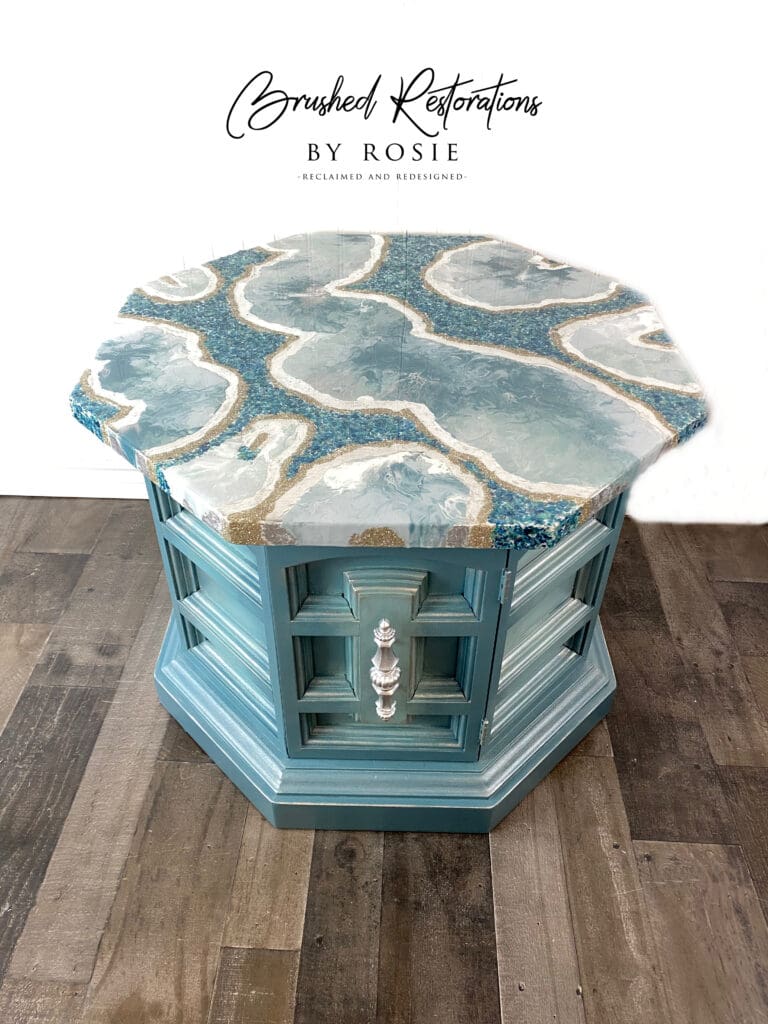
Free Resources and Further Learning
To help kickstart your mixed media art journey, I’m offering a Free Resin Cheat Sheet. This resource is packed with tips on resin types, curing times, and safety precautions—essential for anyone new to working with this medium. Download it today to get a head start on your projects!
Additionally, if you’re looking to delve deeper into specific techniques or start selling your artwork, my courses such as “Epoxy Resin Top Coat” and “Geode Resin Art” provide comprehensive tutorials that cover everything from basic to advanced skills. These courses are designed to help you refine your craft and transform your artwork into stunning professional-quality pieces.
Conclusion
Mixed media art is about exploring and combining various artistic elements to create something truly unique and personal. Whether you’re making art for pleasure or to sell, the key is to enjoy the process and continue learning and experimenting. With the resources and courses available, you’re well-equipped to take your artistic skills to the next level.
Famous Mixed Media Artists and Inspirational Works
Exploring the works and lives of famous mixed media artists can provide invaluable insight and inspiration for your own artistic journey. This section profiles several influential artists and highlights key works that have defined the genre of mixed media art.
Artists You Should Know
- Pablo Picasso and Georges Braque: Begin with the originators of the Cubist movement, who pioneered the use of mixed media collage art. Discuss how their innovative use of non-traditional materials challenged and expanded the boundaries of artistic expression.
- Robert Rauschenberg: Known for his “Combines,” Rauschenberg incorporated materials like quilts, tires, and newspapers into his paintings, blurring the lines between painting and sculpture. Highlight how his work exemplifies the essence of mixed media—combining paint, sculpture, and real-world objects to create new, thought-provoking compositions.
- Frida Kahlo: While primarily known for her self-portraits, Kahlo’s work often included mixed media elements like textile, foliage, and animal bones, reflecting her intense personal mythology and rich cultural heritage. Discuss how these elements added layers of meaning to her paintings.
Gallery of Inspirational Works
- Feature images of iconic mixed media artworks by the artists mentioned above. Provide analysis on how each piece utilizes different mediums to convey complex narratives or emotions.
- Encourage readers to visit local art galleries or online databases to view these works in person or virtually, helping them appreciate the depth and texture that mixed media brings.
Building Your Own Mixed Media Art Collection
For many enthusiasts, collecting art is not just a passion but an investment in culture and creativity. This section offers practical advice on how to start and maintain a mixed media art collection, including the care and preservation of diverse artworks.
Starting Your Collection
- Educate Yourself: Before purchasing, learn about the various styles and mediums in mixed media. Understand what distinguishes a valuable piece in terms of material, artist, and era.
- Attend Shows and Galleries: Immerse yourself in the art world by visiting art shows, galleries, and auctions. Engage with artists and curators to gain insights that can guide your collecting decisions.
- Buy What You Love: While investment potential is important, collecting art that you personally enjoy adds immeasurable value to your life and home.
Caring for Mixed Media Artworks
- Proper Display: Discuss the importance of displaying artwork in appropriate environmental conditions, away from direct sunlight and humidity, to prevent degradation of materials.
- Regular Maintenance: Provide tips on regular maintenance, including dusting and cleaning techniques that are safe for mixed media artworks.
- Professional Conservation: For high-value pieces, recommend consulting with a professional conservator who can advise on long-term care and preservation.
Conclusion
Collecting and caring for mixed media art is a rewarding endeavor that enhances not only your living spaces but also your connection to the art world. As your collection grows, so too will your appreciation for the diversity and depth of mixed media art.
Embracing the Journey of Mixed Media Art
Mixed media art is a vibrant and ever-evolving field that challenges the conventions of traditional art forms by blending techniques, materials, and ideas. It is an art form that encourages experimentation and personal expression, making it accessible and engaging for artists at all levels of expertise. Whether you are just beginning to explore this dynamic medium or are looking to deepen your existing practice, the journey of mixed media art is one of continual learning and discovery.
As you draw inspiration from famous artists, experiment with diverse materials, or even start to curate your own art collection, remember that the essence of mixed media lies in its boundless possibilities. Each piece you create or collect adds to the rich tapestry of your artistic journey. I encourage you to embrace the challenges and revel in the creativity that mixed media art affords. Keep pushing the boundaries, and let your unique voice shine through in your creations.
Thank you for joining me in this exploration of mixed media art. May your artistic endeavors be fulfilling and your collections bring joy and inspiration into your life and the spaces they inhabit.
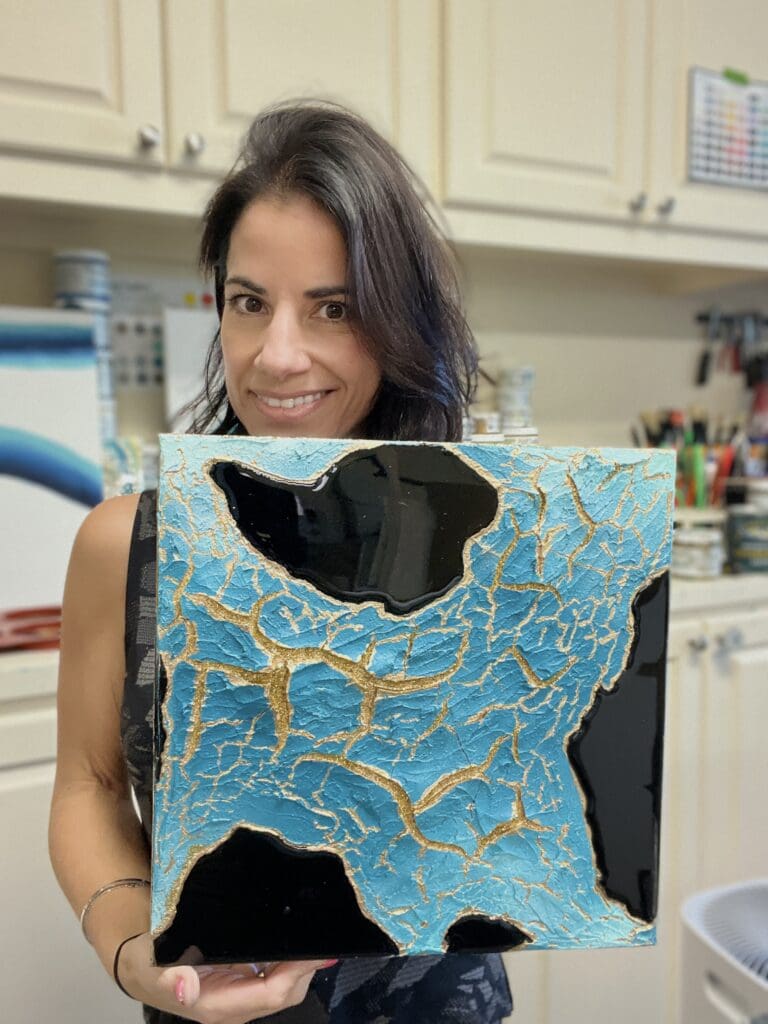
FAQs Mixed Media Art
What are the best materials to start with for a beginner in mixed media art?
Start with basic supplies like acrylic paints, mod podge (glue & sealer), various papers (tissue, cardstock, old books), and small embellishments (buttons, beads). These materials are versatile and forgiving, perfect for experimentation.
How can I find my unique style in mixed media art?
Finding your unique style involves experimentation and reflection. Try different materials and techniques; mix and match until you find combinations that resonate with your personal aesthetics and narratives. Also, studying the works of various mixed media artists can provide inspiration and direction.
Where can I learn advanced mixed media art techniques?
Consider taking specialized courses like my “Geode Resin Art” or “Epoxy Resin Top Coat” classes, which offer in-depth guidance on specific techniques. Additionally, workshops, online tutorials, and art books are great resources for learning and refining advanced skills.
Can mixed media art be a profitable business?
Absolutely. Many artists successfully sell their mixed media art at galleries, online platforms, and craft shows. Enhancing your visibility through social media and art networks can also help attract buyers and commission work.
How should I price my mixed media artworks?
Pricing artwork can be challenging but should reflect the cost of materials, time spent, artistic value, and market demand. Consider also your reputation and experience. Starting at a lower price point can be a strategic approach to enter the market, gradually increasing as your art gains recognition.
What are some common mistakes to avoid in mixed media art?
Common mistakes include using incompatible materials without proper preparation, overwhelming a piece with too many elements, or not allowing layers to dry sufficiently, which can affect the durability and aesthetics of the artwork. Taking time to plan your composition and being patient with the process can help avoid these pitfalls.
Hi There, I’m Rosie
I’m a mixed media artist who turned my passion for resin art into a thriving business, Brushed Restorations by Rosie. I love luxury, bold creativity, and helping other artists transform their hobbies into successful businesses. Between creating custom art pieces and teaching online courses, you’ll find me juggling life with my four kids and chasing new ideas to inspire creators like you!
My mission? To empower artists to grow their skills, build their brands, and make their art dreams a reality.


